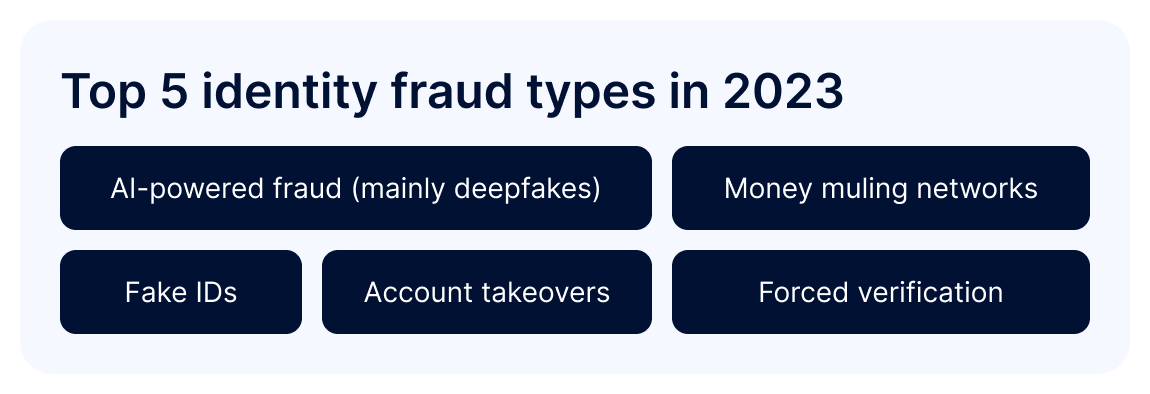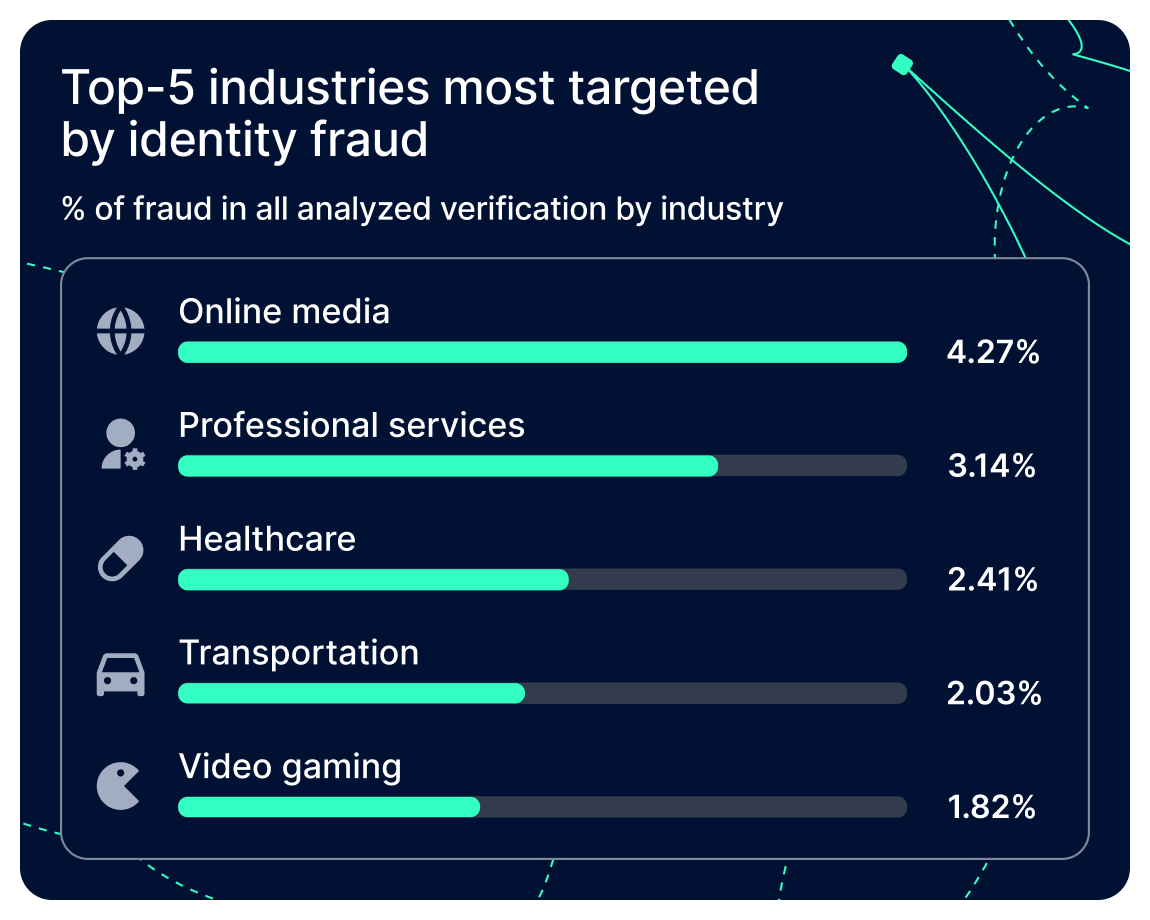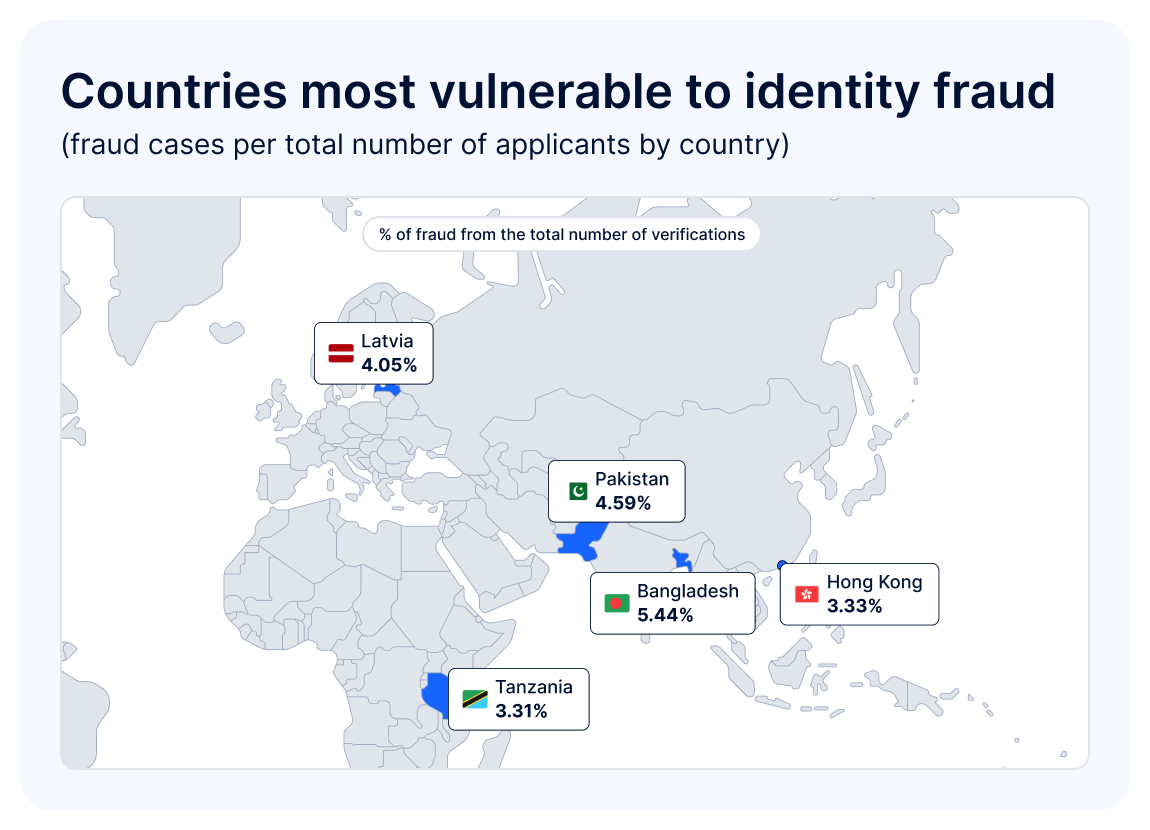As technologies such as AI continue to advance, so too does the sophistication of identity fraud which is in line with the evolving fraud trends in Asia Pacific. The past few years have shown a concerning trend, with the rate of identity fraud worldwide nearly doubling from 1.1% in 2021 to 2% in 2023.
Sumsub’s Identity Fraud Report 2023 sheds light on the evolving landscape of identity fraud by analysing over two million fraud cases. It highlights the main fraud trends, their impact worldwide, and innovative protection methods against growing threats.
This article gathers some of the key takeaways of the report with a focus on the APAC region.
Identity fraud dynamics and trends across borders
In 2022, the top 3 fraud trends were deepfakes, complex fraud patterns, and advanced forgeries. These trends have persisted and evolved in 2023, in addition to two emerging identity fraud trends: account takeovers (+155%) and forced verification (+305%).
The industries most affected by identity fraud in 2023 are online media, professional services, healthcare, transportation, and video gaming. The online media sector saw the biggest rise in identity fraud, rising from 1.56% in 2021 to 4.27% in 2023.
These statistics show that identity fraud tends to target non-regulated industries more often due to their higher vulnerability. This is primarily due to a lack of strict regulations and verification requirements, which make it easier for fraudsters to exploit weaknesses.
Identity fraud highlights for APAC
In 2023, three countries from the APAC region were listed in the top 5 countries most vulnerable to identity fraud. These are Bangladesh (5.44%), Pakistan (4.59%) and Hong Kong (3.33%).
Other key findings for the APAC region include:
● Indonesia, Hong Kong, and Cambodia having witnessed a more than two-fold increase in identity fraud from 2021 to 2023.
● Singapore standing out for successfully reducing its fraud rate in 2023, maintaining a low level of 0.89%.
● Japan, Australia and Thailand having maintained their fraud rates at under 2% between 2021-2023.
Deepfakes are a growing threat in APAC and beyond
In APAC, deepfakes have grown significantly (+1530%), with Vietnam and Japan leading in the number of cases.
Japan is known for its use of deepfakes in the entertainment sector, so this may enable fraudsters to exploit this technology in other fields. Meanwhile, Vietnam’s growing digital economy and large online population make it an attractive target for fraudsters.
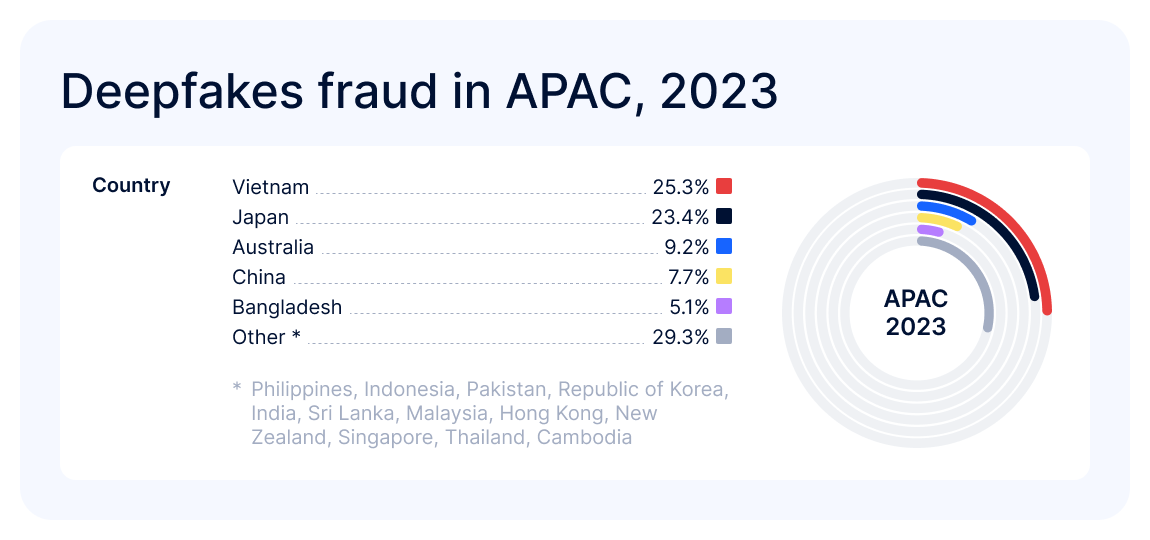 With AI-driven fraud remaining the most prominent challenge across various industries, crypto is the main target, with 88% of all deepfake cases detected in 2023 followed by fintech with 8%.
With AI-driven fraud remaining the most prominent challenge across various industries, crypto is the main target, with 88% of all deepfake cases detected in 2023 followed by fintech with 8%.
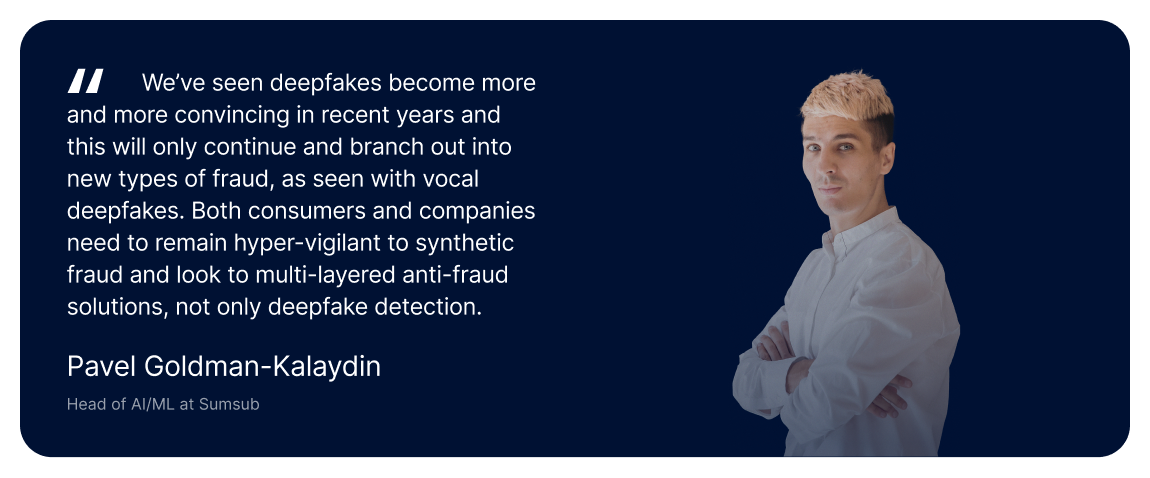 Verification and identity fraud prevention in 2024: Expert insights
Verification and identity fraud prevention in 2024: Expert insights
Regulators will focus on AI in 2024, with China taking the lead in deepfake regulation. The Chinese Cyberspace Administration Authority (CAC) approved the “Regulations on the Administration of Deep Synthesis of Internet Information Services” in December 2022, which came into force in August 2023.
Other trends forecasted in the report include:
● Deepfake advancements and the escalation of account takeovers and money muling
● Increased emphasis on non-document verification to confirm identity
● Online media implementing stricter rules regarding identification
● The mandatory need for local authorities to enhance data security and personal information
● The rise of network analysis as a tool to uncover fraud
Read Sumsub’s Identity Fraud Report 2023 for in-depth insights and innovative fraud prevention methods.
- SEO Powered Content & PR Distribution. Get Amplified Today.
- PlatoData.Network Vertical Generative Ai. Empower Yourself. Access Here.
- PlatoAiStream. Web3 Intelligence. Knowledge Amplified. Access Here.
- PlatoESG. Carbon, CleanTech, Energy, Environment, Solar, Waste Management. Access Here.
- PlatoHealth. Biotech and Clinical Trials Intelligence. Access Here.
- Source: https://fintechnews.sg/81520/sponsoredpost/deepfakes-and-advanced-forgeries-emerge-as-leading-identity-fraud-trends-in-asia-pacific/



